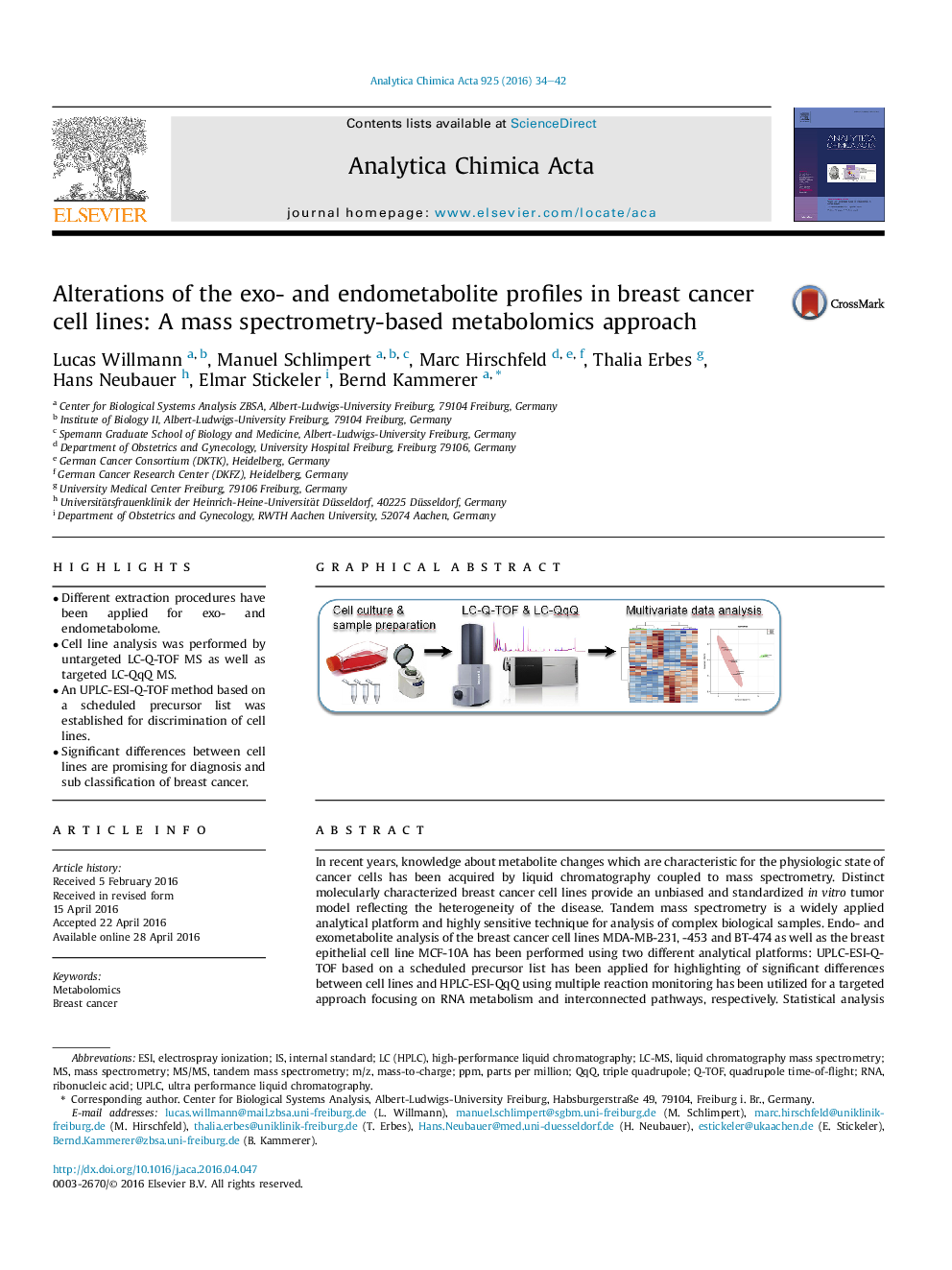| Article ID | Journal | Published Year | Pages | File Type |
|---|---|---|---|---|
| 1162769 | Analytica Chimica Acta | 2016 | 9 Pages |
•Different extraction procedures have been applied for exo- and endometabolome.•Cell line analysis was performed by untargeted LC-Q-TOF MS as well as targeted LC-QqQ MS.•An UPLC-ESI-Q-TOF method based on a scheduled precursor list was established for discrimination of cell lines.•Significant differences between cell lines are promising for diagnosis and sub classification of breast cancer.
In recent years, knowledge about metabolite changes which are characteristic for the physiologic state of cancer cells has been acquired by liquid chromatography coupled to mass spectrometry. Distinct molecularly characterized breast cancer cell lines provide an unbiased and standardized in vitro tumor model reflecting the heterogeneity of the disease. Tandem mass spectrometry is a widely applied analytical platform and highly sensitive technique for analysis of complex biological samples. Endo- and exometabolite analysis of the breast cancer cell lines MDA-MB-231, -453 and BT-474 as well as the breast epithelial cell line MCF-10A has been performed using two different analytical platforms: UPLC-ESI-Q-TOF based on a scheduled precursor list has been applied for highlighting of significant differences between cell lines and HPLC-ESI-QqQ using multiple reaction monitoring has been utilized for a targeted approach focusing on RNA metabolism and interconnected pathways, respectively. Statistical analysis enabled a clear discrimination of the breast epithelial from the breast cancer cell lines. As an effect of oxidative stress, a decreased GSH/GSSG ratio has been detected in breast cancer cell lines. The triple negative breast cancer cell line MDA-MB-231 showed an elevation in nicotinamide, 1-ribosyl-nicotinamide and NAD+ reflecting the increased energy demand in triple negative breast cancer, which has a more aggressive clinical course than other forms of breast cancer. Obtained distinct metabolite pattern could be correlated with distinct molecular characteristics of breast cancer cells. Results and methodology of this preliminary in vitro study could be transferred to in vivo studies with breast cancer patients.
Graphical abstractFigure optionsDownload full-size imageDownload as PowerPoint slide
